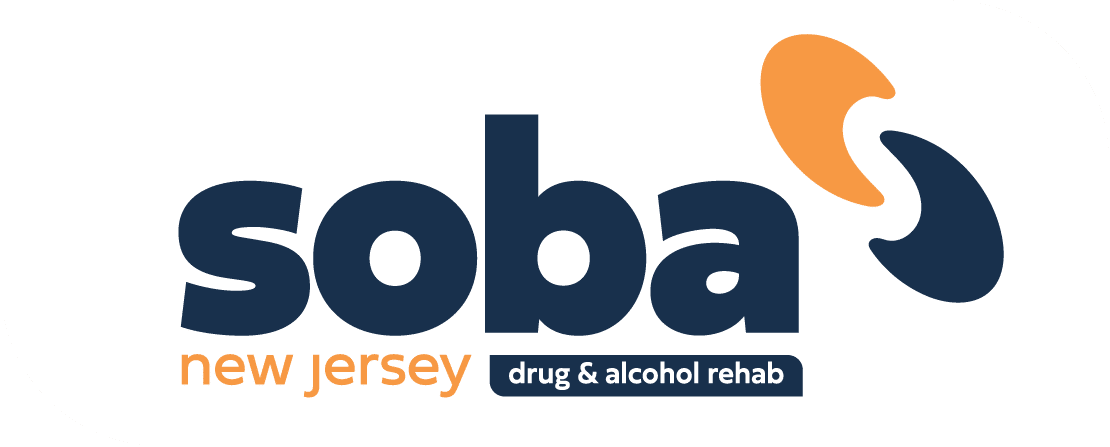The Opioid Epidemic
In 2018 opioids caused 46,802 overdose deaths – accounting for nearly 70% of the total overdose deaths that year. In the last 20 years alone, the opioid epidemic in America has killed nearly 450,000 people. That’s more lives lost than the combined populations of Newark, NJ, and Trenton, NJ.
128 people die every day from an opioid overdose.
What are Opioids?
Opioids are drugs used to treat pain. Some are derived directly from the opium poppy, these are “natural opioids” and include drugs like heroin, morphine, and codeine. Other opioids are synthetic but have the same effects on the brain as natural opioids. The most common synthetic opioids are fentanyl, methadone, and tramadol.
Technically, natural opioids are known as opiates, while semi-synthetic and synthetic drugs are referred to as opioids. The terms are often used interchangeably. For the purposes of this article, we’ll use the term opioids referring to both the natural and synthetic kinds.
Opioids Effect on the Brain
Opioids are drugs that chemically bind to certain receptors in your brain. The opioid effect on the brain simulates the effects of naturally occurring pain-relieving chemicals, endorphins. This process blocks the user’s perception of pain. This is why opioids are commonly prescribed as pain medication. However, it is very easy to develop a tolerance, leading to the need to increase the dosage, eventually resulting in the development of an addiction.
Side Effects of Opioids
The signs and symptoms of opioid addiction are highly noticeable. Short-term effects include drowsiness, pain relief, euphoria, and sedation. Repeated use of opioids results in the slow production of endorphin hormones. The body eventually develops a tolerance, and the addict tends to crave for increased doses. Quitting abruptly at this stage leads to severe withdrawal symptoms which can last up to 10 days. Long-term effects of opioids include drowsiness, lethargy, paranoia, respiratory depression, abdominal distention, liver damage, development of tolerance, and dependence. To successfully stop using opioids it’s important to work with an opioid rehab program.
Opioid Misuse
- Over 20% of patients prescribed opioids misuse them.
- Roughly 10% of patients develop an opioid use disorder.
- ~80% of people who use heroin misused prescribed opioids first.
The Cause of the Opioid Epidemic
There are many factors that contribute to the opioid epidemic.
Introduction of Heroin into the United States
Heroin is an illegal opioid, and it’s derived from the opium poppy plant. It is classified in the United States as a schedule 1 substance. This means that it has a high likelihood of being abused and that it serves no medical purpose.
Heroin was developed in 1874 and became popular in 1898, when Felix Hofman re-synthesized heroin for use in cough medicine, relief from labor pains, and for use in surgery.
Heroin’s Illegal History
Heroin became illegal with the introduction of the Heroin Act of 1924 when its addictive and dangerous qualities had become clear. Then, in the 1930s, it began to be smuggled into the U.S. from China. Black markets opened, expanded, and thrived. The illegal use and distribution of heroin fuel much of the opioid epidemic today.
Over Prescribed Pain Medications
In a misguided effort to reduce their patients’ pain, many doctors over-prescribe powerful opioids. The overprescription leads to overuse and eventual misuse. Many doctors don’t realize the strong role that genetics and family history can play in the formation of an addiction.
Chemically Modified Fentanyl
Fentanyl didn’t start the opioid epidemic, but in recent years it has made it the worst it has ever been. Fentanyl is a synthetic opioid 50 to 100 times more potent than heroin. While regulation in the US has been in place for decades, it is only recently that regulation of fentanyl began in China. However, because fentanyl is a synthetic opiate and produced in a lab, chemists have simply begun to tinker with the chemical composition.
The results of that tinkering have produced drugs such as carfentanil which is 1000 times more potent than morphine. The difficulty appears to be that the instant a new drug such as carfentanil becomes regulated, new strains begin to appear. The DEA can persuade the Chinese government to regulate a new analog of fentanyl, but the instant they do so, new varieties begin to appear in bags of heroin on US streets or simply sold on their own.
The Medical Industry
The pharmaceutical companies played their part as well. In 2007, Purdue Pharma, the makers of the powerful opioid OxyContin, admitted to lying to doctors and patients about the risks and addictive potential of their product. Several company executives plead guilty to a variety of federal charges.
Insurance companies may have played a role, too. They may be guilty of allowing payments on large amounts of cheaper, but addictive, opioids while limiting patient access to certain drugs which may have been appropriate, and yet carried low to no risk of addiction.
Lack of Opioid Recovery Programs
To some degree, the lack of affordable treatment facilities and opioid recovery programs have allowed the epidemic to continue.
Withdrawing from opioids, particularly strong ones, is a very difficult process. It’s nearly impossible to go through it alone, without the help of a medical detox or recovery program.
Learn more about opioid and opiate detox.
Social Issues
Poverty, hopelessness, and unemployment have always been and will always be factored in drug abuse of all types.
The Fight Against the Opioid Epidemic
Lawsuits Against Opioid Manufacturers
Hundreds of lawsuits have been consolidated against drug companies and distributors with the Department of Justice throwing its weight behind those lawsuits. The government is siding with the plaintiffs in the lawsuits that are aimed to financially penalize the prescription drug industry. The DOJ has also set up a task force to aid in the prosecution and litigation of drug companies, doctors, and distributors.
The efforts being made are in many ways commendable. Although, anyone that has lost a family member or has a family member struggling with addiction knows that any money gained will do little if anything to reverse the tragedies those families have faced and currently live with. Still, considering that there seem to be no other repercussions for the actions of the drug industry, a financial penalization is better than no action being taken at all.
The Fight to Get People into Recovery
Addiction treatment facilities and peer recovery programs services have a significant effect on those of us that live with substance use disorder. These programs increase people’s willingness and ability to become active in their own recovery. At SOBA New Jersey our Opioid Recovery Program helps people to recover from addiction for the long term. Our opioid detox, treatment, and after-care programs help our clients lead a successful life of sobriety.
Deterrents to Opioid Addiction Treatment
Stigma of Addiction
There are several issues preventing people from getting into a drug treatment facility or undergoing the detox process. One of the key issues that addicts deal with is the stigma of addiction. Many live in constant fear that people will discover they are struggling with addiction. Even when the signs of drug use are painfully obvious, asking for help is often too much to bear.
Distrust of Treatment
Addicts generally distrust treatment facilities. Because of the paranoia that can develop from an addiction, anyone claiming they can help seems suspicious. Addicts can also be resistant to treatment because their need to use is so great. That’s why at SOBA New Jersey, our program provides a 24/7 support team, providing the support our clients need at all hours.
Addicts who have a bad experience at one treatment center may become distrustful of all others. But not all addiction treatment programs are the same, and it is important to do research to find what rehab is right for you.
Insurance Coverage
Sometimes, those in need of opioid treatment simply don’t have the money or the insurance coverage to pay for the medical expenses. At SOBA we do our best to accommodate our clients by working with a variety of insurances and offering self-pay programs.
Risk Factors for Opioid Addiction
Young adults, typically 18 to 25 years are the most prominent abusers of prescription opioid pain relievers. Opiates are relatively cheap, and hence, readily available to young drug users as compared to other drugs of abuse. Reports indicate that young people are more socially prone to developing an addiction. Most young adults abuse these drugs to get a “high,” while others do so for varied reasons; including to increase concentration, cope with problems, experiment, lose weight, sleep, social entertainment, relax, or study better.
Other known risk factors for misuse and addiction among young adults include:
- Unemployment
- Age
- History of criminal activity
- Mental health
- Tobacco use
- Stressful environments
- Regular contact with high-risk people and environments
Despite having sufficient information on the hazards of consuming prescription pain medication, many young adults are oblivious to the similarities of such medication to heroin. Some individuals may take opioids assuming that they are not as addictive and detrimental as heroin. Essentially, young adults are not cognizant of the dangers of such highly addictive and hazardous substances. In many cases, the drugs are obtained for genuine use, but their increased availability has become a menace in a culture that is already at risk of taking drugs, consequently, putting young adults in danger.
Prevention of Addiction
In acute pain management, it is best to work with the doctor because healthcare professionals are adept at the appropriate dosage. For chronic pain, there are numerous other treatments that are less addictive including alternative pain medication. Institutions such as colleges can institute measures that support initiatives to mitigate the use of opioids, as well as other drug uses. It’s important for college students to have access to information on the dangers of opioids and addiction. Such efforts promote trust and hope for recovery, as well as create awareness of the dangers of misuse of opioids.
Heroin Drug Rehabilitation Treatment Options
Many ask the question, “Can I give up Heroin without professional help?” Opioid-dependent young adults are often offered outpatient or residential treatment therapies that include detoxification. Opioid dependence has many co-occurring conditions including psychiatric disorders, criminal activities, sexually transmitted infections such as HIV, and hepatitis C infection. Residential treatment is a preferred option. Medication-assisted treatment for dependence has been proven to be safe and effective in improving abstinence during recovery.
Even as the United States declared cases of an opioid overdose a national emergency, to most young users, the use of opioids still has a social appeal. Impacting knowledge on these individuals may go a long way in sensitizing against use. Research has shown that addiction is usually a childhood-onset condition. Addiction takes a toll on young people as it makes them vulnerable to abuse of other drugs, mental health problems, and death from overdose.
Prevention programs such as education, prescription monitoring, and campaigns educating parents to keep away prescription opioids and dispose of old pills may do a lot to prevent the teen onset of abuse as they transition into young adults. Monitoring of opioid availability on online platforms, over-the-counter disbursements, and backstreet supplies may also limit access to the drugs.
SOBA New Jersey’s drug rehab for young adults combats opioid and heroin addiction through proven treatment and care.










